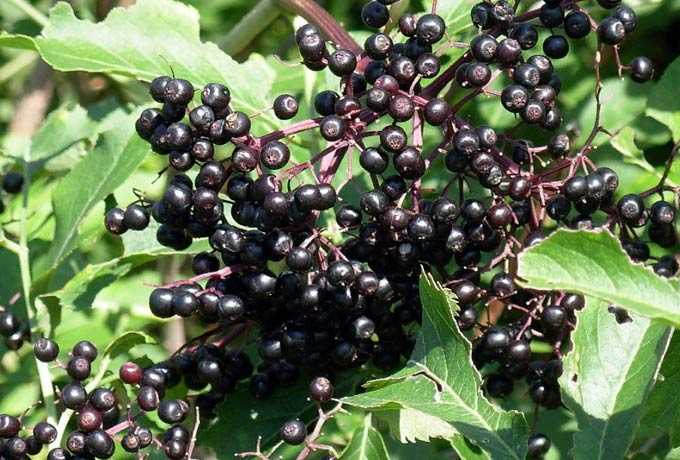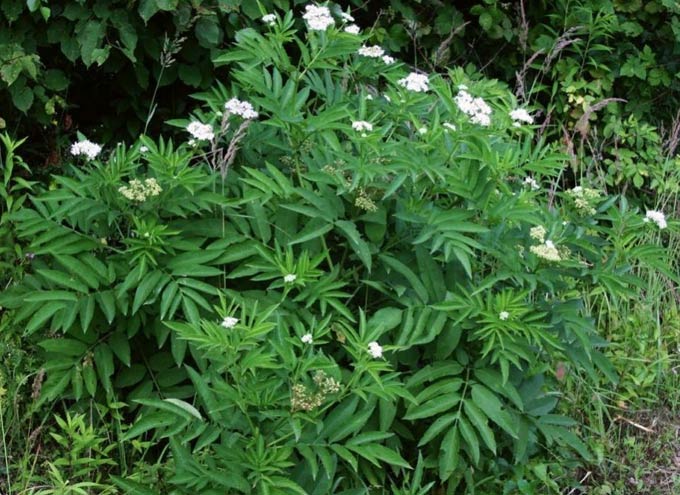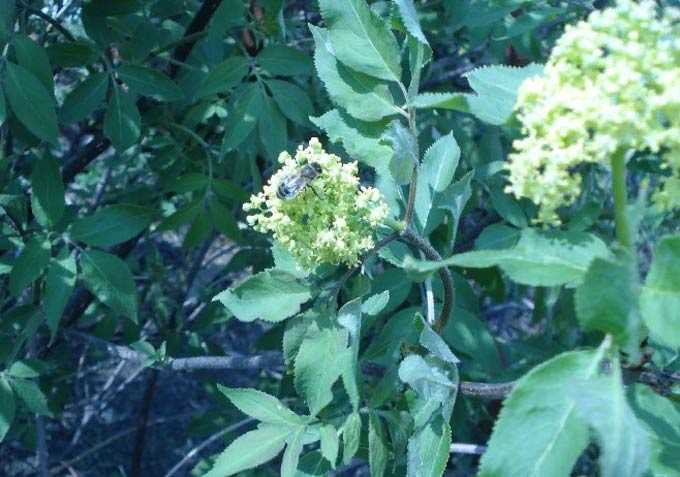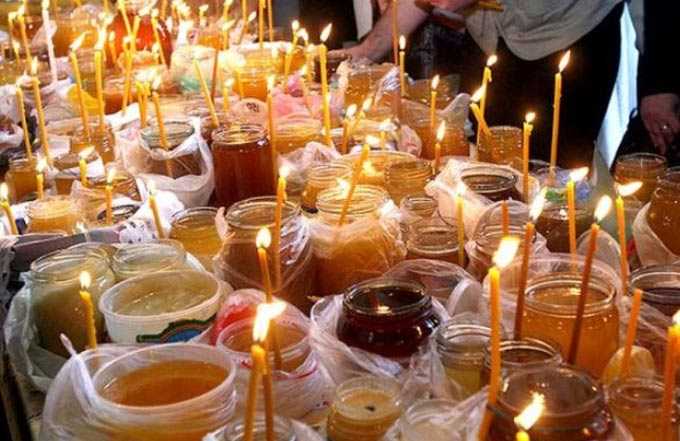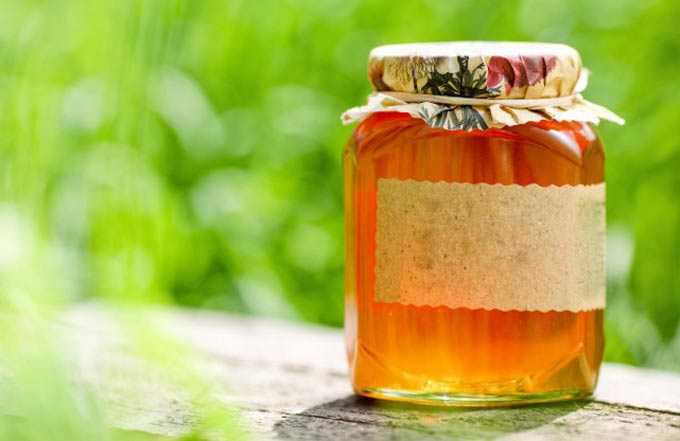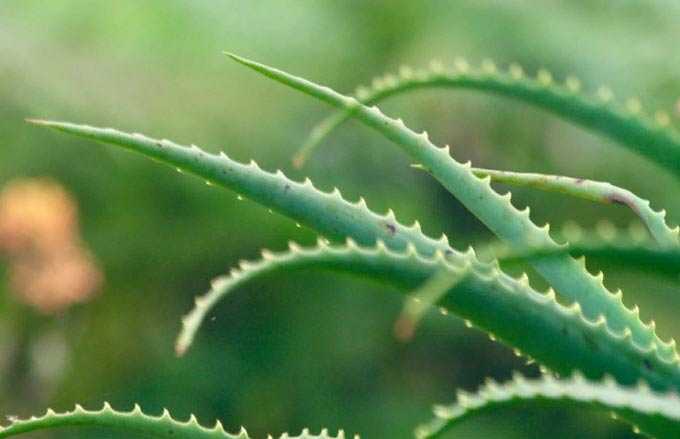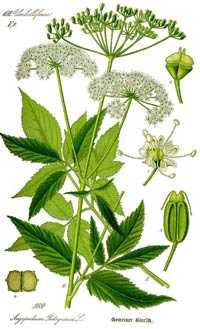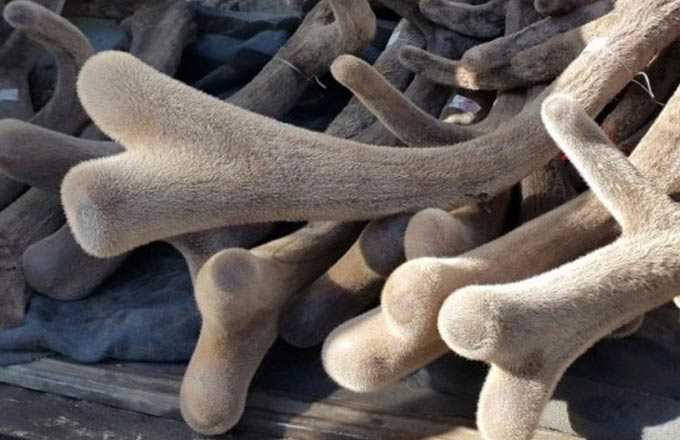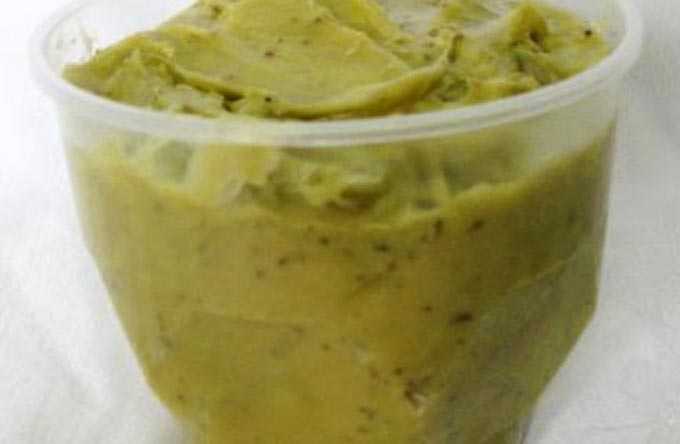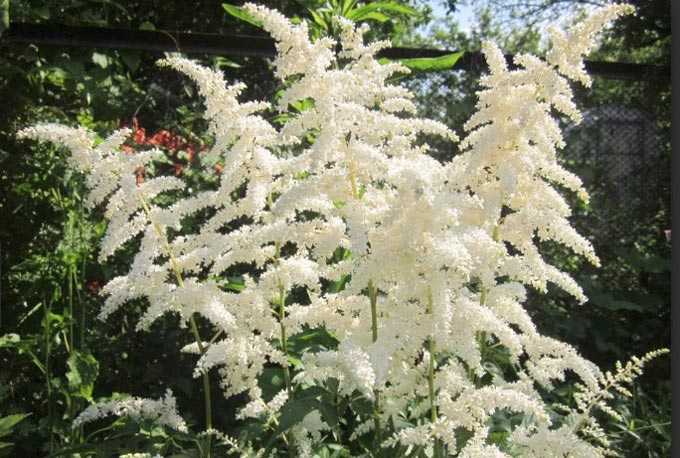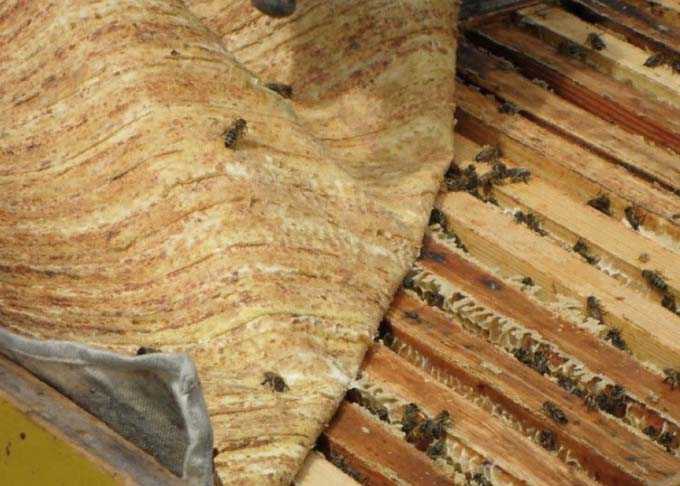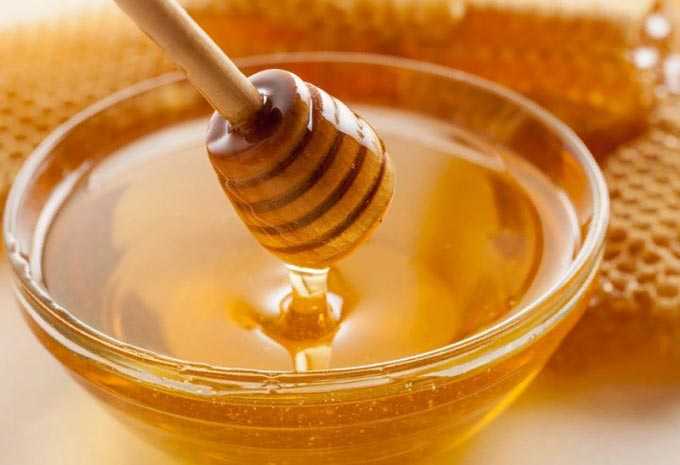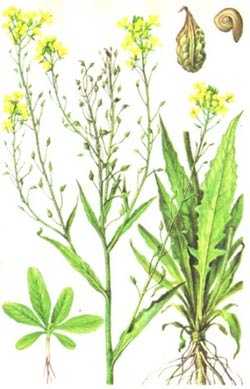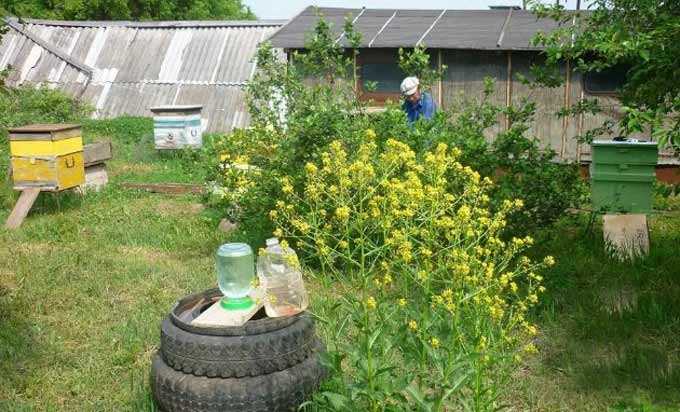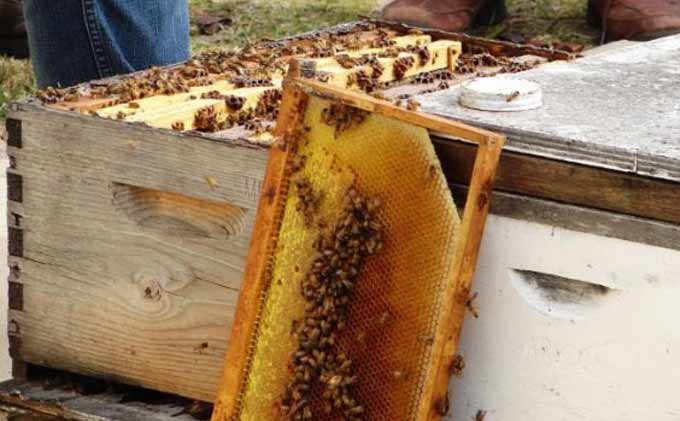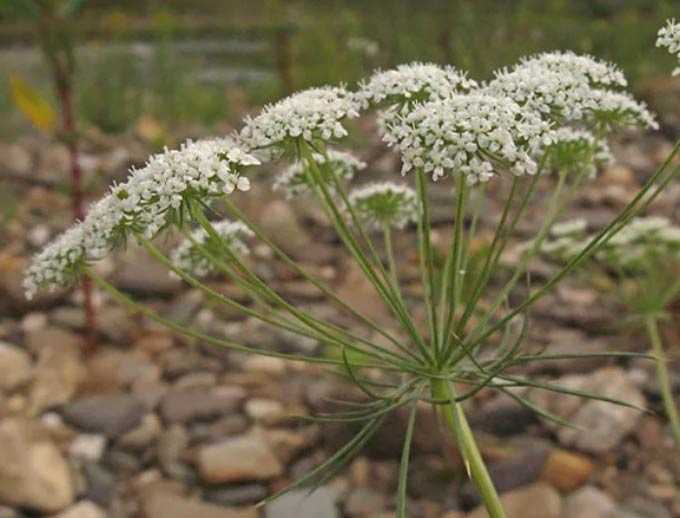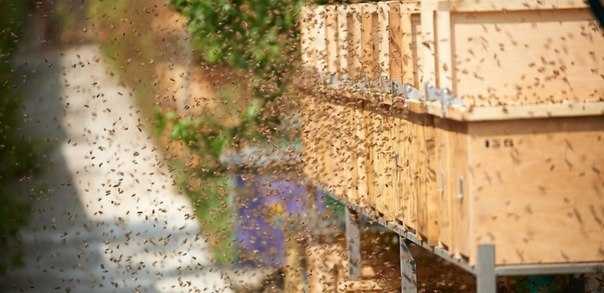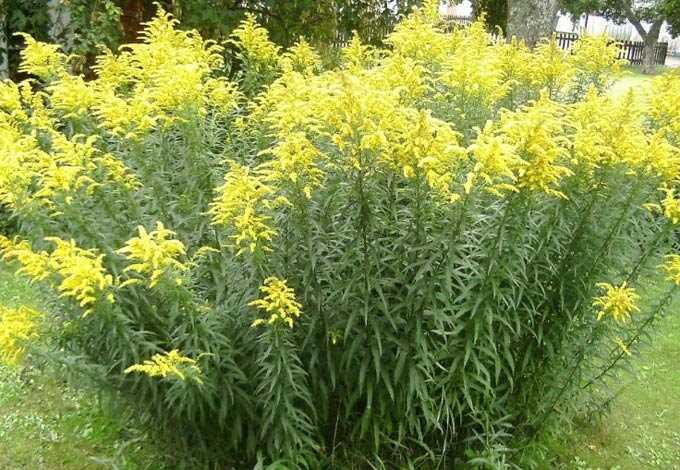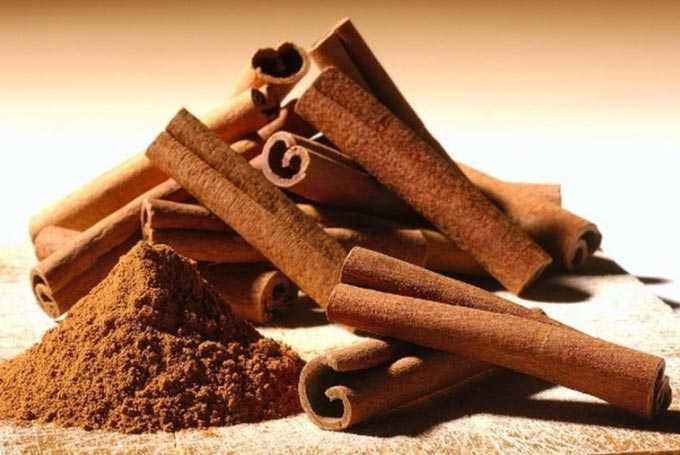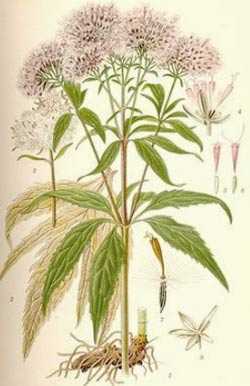The elderberry honey plant has an ambiguous reputation among beekeepers. In the reference literature, three species of this plant are indicated as a source of pollen and nectar. But on thematic forums, they note that bees are reluctant to work on elderberry bushes, especially during the flowering period of other melliferous plants.
Elder, as a genus of flowering wild plants, has about twenty-five varieties. Previously, they were classified as a separate family, but today they are classified as adox. Distribution – the Northern Hemisphere (most of it), as well as Australia.
The content of the article
- 1 Description and melliferous varieties
- 1.1 Red
- 1.2 Black
- 1.3 Grassy
- 2 Honey productivity
- 3 Useful Properties
Description and melliferous varieties
In most cases, elderberries are small trees or large shrubs. There is a herbaceous variety that has value for apiaries as a honey plant. It grows in Ukraine and Belarus.
White flowers are collected in umbrella-type inflorescences. After flowering, small berries are formed with seeds inside – drupes.
Varieties important for apiaries:
- herbaceous;
- black;
- red (ordinary).
Red
The red elderberry variety (racemose, racemose, common) is a medium-sized shrub with an unpleasant odor on foliage and flowers. Red fruits are formed on it – hence the main name of the species.
It grows in temperate climates on the North American mainland and in Eurasia. The fruits and inflorescences of the tree are used in folk medicine, and its cut branches scare off mice, including in apiaries (laid out in winter houses).
Mainly cultivated as an ornamental plant, planted in parks, squares, in personal plots.
It is an indigenous plant for Western Ukraine and the mountainous regions of Europe. You can meet him here in mixed and coniferous forests. In Russia, the common elderberry was grown and is cultivated as an ornamental plant. In the wild, it is found only on wastelands and forest edges.
The shrub reaches a height of 1,5 to 3 meters. It has erect branches covered with gray-brown bark. On the branches there are characteristic “lentils” – not keratinized whitish tubercles that allow living tissues to breathe. The foliage is ovoid with a jagged edge.
Whitish or pale green flowers are collected in panicles. Flowering lasts only two weeks in late May, early June or March-April (depending on the region). Red drupes ripening in July-August have the same unpleasant odor as flowers and leaves.
The shrub is propagated in the fall by means of lignified cuttings. The plant is unpretentious to the soil – it can grow even on clay soil.
Black
Black elderberry is common in the south of the European part of Russia, found in Moldova, Ukraine, Belarus, Transcaucasia. Here, its thickets can be found in cemeteries, wastelands, along highways and dirt roads, as well as undergrowth in deciduous and coniferous forests.
This is a branched shrub or tree from two to ten meters high, covered with brown bark. There are yellowish “lentils” on the branches. The leaves are very long (sometimes up to 30 cm), grouped on short petioles.
The flowers are rather small, yellow-white or pure white, collected in large corymbose inflorescences. The honey plant blooms from May to July, depending on the region. Fruits are black-purple in color (drupes with 2-4 seeds) appear in August.
Important! This species is moderately toxic to mammals! But at the same time, ripe berries, together with seeds and flowers, do not contain hazardous substances. Accordingly, honey and pollen do not pose a danger to humans.
On the basis of the flowers of the plant, they prepare diaphoretic, diuretic and anti-inflammatory preparations and pharmaceutical preparations. From ripe fruits, the hostess cooks jam, jam. In England, the berries are used for industrial production of the traditional drink known as Elderflower cordial.
Propagated in autumn by cuttings.
Grassy
Herbaceous (or smelly) elderberry is common in the forest-steppe zone of Ukraine, Belarus. It also grows in the south of Russia, the Caucasus and Central Asia.
It is a large herbaceous bush, reaching a height of 60 cm to 1,5 meters. All stems are straight, covered with elongated leaves grouped on short petioles.
The flowers are small white, with a pinkish corolla outside, collected in shield-like brushes. Almond aroma is perceptible during flowering. Inflorescences bloom from May to July, in some regions from August to September. Drupe black, shiny.
Dried flowers are used in folk medicine. They are used to prepare diaphoretic, diuretic and astringent infusions. Decoction gargle with sore throats and colds.
Honey productivity
Elderberry honey plant with uncertain nectar productivity. This plant provides an early supportive bribe – honey from it has no market value.
According to the black elderberry, there is information that it gives up to 85 kilograms of nectar from one hectare of dense thickets. Other sources indicate more modest figures – about 18-20 kilograms.
However, the observations of beekeepers indicate another fact – the bee is reluctant to go to this plant, even if it grows near apiaries. This is explained by the fact that insects are attracted by other, more productive and pleasantly smelling honey plants, which bloom in spring and early summer.
In the natural conditions of the Moscow and Leningrad regions, the red elderberry variety provides a good pollen flow. For several days of flowering shrub bees clog the plants with gray-yellow pollen in 5-6 frames. The situation is similar in Ukraine – bees take mainly pollen from elder (black).
Useful Properties
In theory, elderberry nectar could be found in May honey, giving it anti-inflammatory properties that are beneficial for colds, including sore throat and bronchitis.
Outwardly, such a product is used for cosmetic procedures, skin rejuvenation, hair improvement. And inside for general strengthening of the body.
